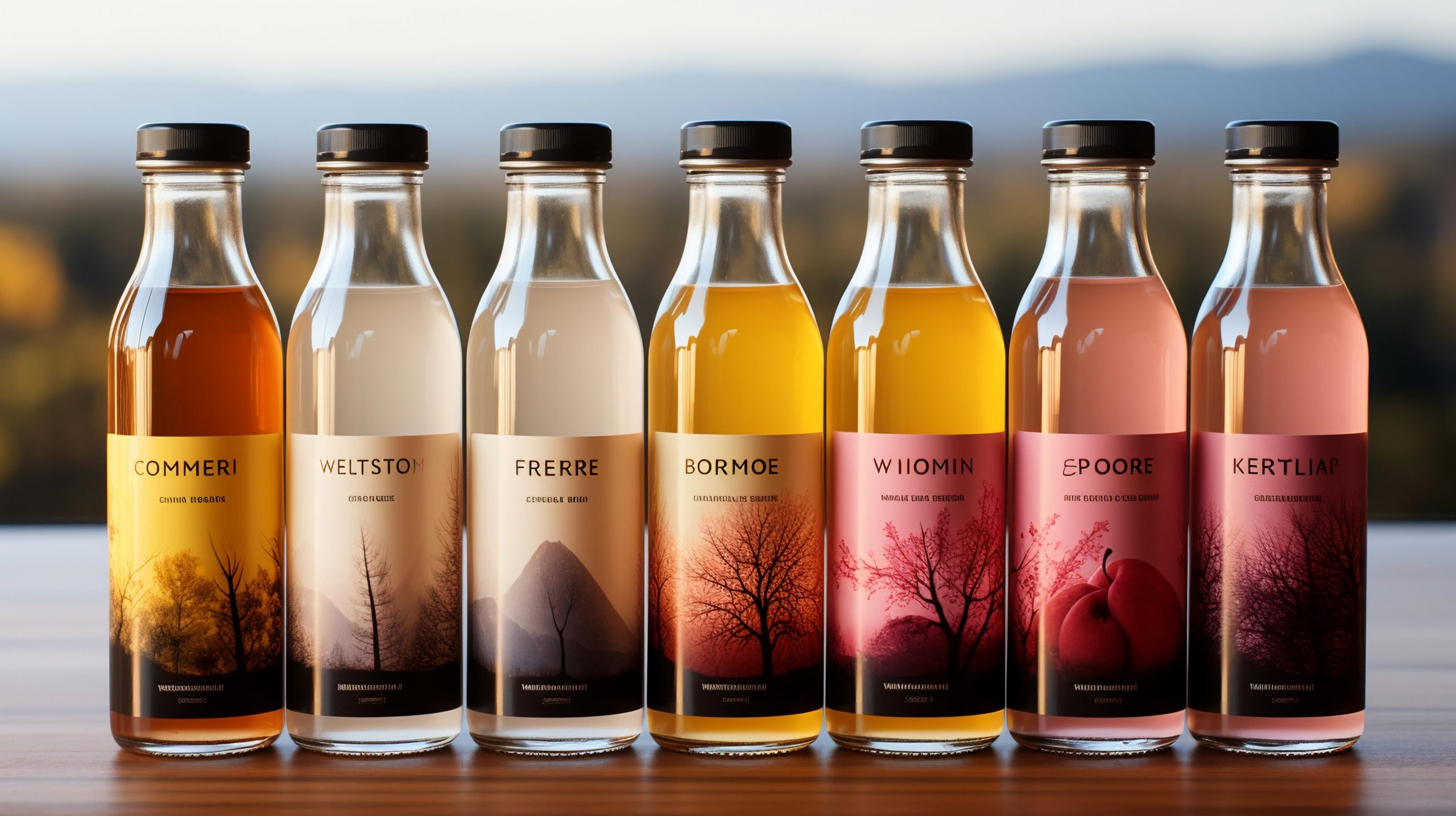In the cosmetics industry, first impressions matter. But cosmetic product labels are more than just a branding tool. They play a crucial role in ensuring consumer safety and compliance with regulations. So, understanding cosmetic labeling requirements, and best practices is essential for compliance and to attract your target audience. In this blog, we’ll explore everything you need to know about cosmetic labels including the best materials, labeling requirements, and the role of packaging.
Table of Contents
- The Importance of Cosmetic Product Labels
- Understanding Cosmetic Labeling Requirements
- Key Elements of Effective Cosmetic Product Labels
- Best Materials for Cosmetic Product Labels
- The Role of Packaging in Choosing Cosmetic Product Labels
- Cosmetic Label Printing: Choosing the Right Company
The Importance of Cosmetic Product Labels
Cosmetic product labels serve multiple purposes, from providing essential information to consumers to ensuring compliance with regulatory bodies. These labels communicate essential details about the product, including its ingredients, usage instructions, and potential allergens.
Moreover, cosmetic labels are a key element of your brand’s identity, helping to attract and retain customers. Effective cosmetic labels enhance brand recognition and build consumer trust. A well-designed label that clearly conveys product benefits and ingredients can differentiate your brand in a competitive market and help your customers stay loyal.
Understanding Cosmetic Labeling Requirements
FDA Guidelines for Cosmetic Labeling
In the United States, the Food and Drug Administration (FDA) sets the standards for cosmetic labeling regulations. Compliance with these guidelines is mandatory to ensure that consumers are well-informed and protected. Key cosmetic product labeling requirements include:
Ingredient Listing: Ingredients must be listed in descending order of predominance.
Net Quantity: The amount of product in the package should be stated clearly.
Manufacturer Information: Include the name and address of the manufacturer, packer, or distributor.
Warnings and Directions: Any necessary warnings or directions for safe use must be included.
Get acquainted with these guidelines for your specific state as it may differ from state to state and make sure your brand stays compliant. This will also help you build trusting relationships with your customers.
There may be too much information to include in your cosmetic labels so you may need to prioritize the things you want to highlight the most. Correctly structuring all the information is crucial from the consumers’ point of view as they need to easily find and understand everything that’s written on the label. Make sure no design element prevents them from accessing the most important information.
Key Elements of Effective Cosmetic Product Labels
To create effective cosmetic labels that comply with regulations and appeal to consumers, consider the following key elements:
Brand Identity
Your label should reflect your brand’s identity, including logo, colors, and overall design aesthetics. Consistency in branding helps build recognition and trust.
Clarity and Readability
Ensure that all text is clear and easy to read. This is particularly important for ingredient lists and instructions for use. Use contrasting colors and legible fonts to enhance readability.
Ingredient Transparency
Consumers are increasingly concerned about the ingredients in their cosmetics. Be transparent and provide a full list of ingredients, including any potential allergens. This way your company can build trust and help consumers make informed decisions.
Safety Information
Include any necessary safety information, such as warnings about potential allergic reactions or proper storage instructions. This is not only a regulatory requirement but also a way to ensure consumer safety.
Best Materials for Cosmetic Product Labels
Choosing the right materials for cosmetic product labels is important for durability, aesthetics, and functionality. Depending on the type of cosmetics your company produces, your choice of label can differ. Let’s see what materials there are.
BOPP (Biaxially Oriented Polypropylene) or PP
Many cosmetic labels consider BOPP/PP the best choice for cosmetic labels due to its durability and resistance to oil and water. This means that BOPP/PP cosmetic labels won’t wrinkle, peel and get distorted from constant use and wet conditions. Available in clear, white, and metallic finishes, it offers versatility for various branding needs.
Vinyl
Vinyl labels are flexible and durable, ideal for products exposed to water and oils, such as shower gels and shampoos. They can withstand extreme temperatures, ensuring the label remains intact under different conditions.
Paper
While not as durable as BOPP or vinyl, paper labels are an eco-friendly option. They can be laminated to improve resistance to moisture and wear, making them suitable for products with a shorter shelf life or minimal exposure to water. You can have paper labels in various styles like glossy paper, matt or uncoated paper.
Polyester
Polyester labels provide excellent durability and are resistant to harsh conditions. They are often used for high-end cosmetic products that require a premium look and feel.
The Role of Packaging in Choosing Cosmetic Product Labels
The packaging of your cosmetic products plays a significant role in choosing the type of label you should use. The packaging material, shape, and the product itself all influence label selection. Remember that whether your products will be contained in a bottle, a jar, a tube or a box, the first thing you should answer is how they will be handled and where people will store them.
Packaging Material
Different packaging materials such as glass, plastic, and metal require different types of labels. For example, glass bottles might benefit from clear BOPP labels that allow the product’s color to show through, while plastic containers might be better suited for vinyl or polyester labels that adhere well and provide a durable finish.
Cosmetic Product Shape
The shape of the cosmetic product packaging also affects label choice. Cylindrical bottles require flexible labels that can wrap smoothly without creasing, while flat surfaces allow for a wider variety of label types.
Environmental Factors
Consider where and how your product will be used. If your product is likely to be exposed to moisture, such as a bathroom or shower product, you’ll need waterproof and oil-resistant labels. For products exposed to sunlight, UV-resistant labels are essential to prevent fading.
Cosmetic Label Printing: Choosing the Right Company
Selecting the right cosmetic label printing company is a key step in getting high-quality labels that meet regulatory standards and enhance your brand’s image. Here are some factors to consider when choosing a label printing partner for your cosmetics brand.
Quality and Consistency
The printing quality must be top-notch to ensure that all text is legible, and the design reflects your brand identity. Look for a company with a track record of producing high-quality, consistent labels.
Customization Options
The labels should reflect your brand’s uniqueness. Therefore, you will benefit from choosing a label printing company that offers a range of customization options, including various materials, finishes, and printing techniques.
Turnaround Time
The cosmetics industry is moving forward fast, so timing is everything. Choose a company that can meet your deadlines without affecting labels’ quality.
At Quadlabels we focus on providing value to our customers, ensuring everyone gets quality labels in the fastest time possible. We use UV inkjet printing technology that allows the ink to immediately dry and get us quicker results.
Understanding cosmetic product labels is essential for any cosmetics brand aiming to build trust with their audience. By choosing the right label printing company that can help you with the complexities of the cosmetic labeling requirements, you will be one step ahead of your competitors.
Investing time and resources into perfecting your cosmetic labels is worthwhile as it pays off in consumer trust and brand loyalty. Follow the trends and regulations in the cosmetic industry, and your brand will be one step closer to its customers.



